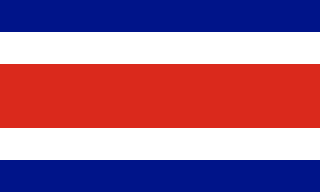
The 1980 Winter Olympics, officially the XIII Olympic Winter Games and also known as Lake Placid 1980, were an international multi-sport event held from February 13 to 24, 1980, in Lake Placid, New York, United States.

The 1984 Winter Olympics, officially known as the XIV Olympic Winter Games and commonly known as Sarajevo '84, were a winter multi-sport event held between 8 and 19 February 1984 in Sarajevo, Yugoslavia. It was the first Winter Olympic Games held in a Slavic language-speaking country, as well as the only Winter Olympics held in a communist country before the 2022 Winter Olympics in Beijing, China. It was the second consecutive Olympic Games held in a communist country, after the 1980 Summer Olympics in Moscow, Russian SFSR, Soviet Union.

Biathlon at the 1980 Winter Olympics consisted of three biathlon events. They were held at the Lake Placid Olympic Sports Complex Cross Country Biathlon Center. This Olympic featured the debut of the 10 kilometre sprint event. The events began on 16 February and ended on 22 February 1980.
Nordic combined at the 1980 Winter Olympics, consisted of one event, held from 18 February to 19 February. The ski jumping portion took place at Lake Placid Olympic Ski Jumping Complex, while the cross-country portion took place at Lake Placid Olympic Sports Complex Cross Country Biathlon Center.

Norway competed at the 1980 Winter Olympics in Lake Placid, United States.

Italy competed at the 1980 Winter Olympics in Lake Placid, United States.

Switzerland competed at the 1980 Winter Olympics in Lake Placid, United States.

East Germany competed at the 1980 Winter Olympics in Lake Placid, United States.

West Germany competed at the 1980 Winter Olympics in Lake Placid, United States.

Japan competed at the 1980 Winter Olympics in Lake Placid, United States. The Team Consists of 50 athletes 46 were men and 4 were women.

Costa Rica sent a delegation to compete at the 1980 Winter Olympics in Lake Placid, United States from 13–24 February 1980. This was Costa Rica's debut appearance at a Winter Olympic Games, after five prior appearances at Summer Olympics. The only athlete sent by the country was alpine skier Arturo Kinch. In the only event he finished, the men's downhill, he placed 41st.

For the 1980 Winter Olympics in Lake Placid, New York, United States, a total of seven sports venues were used. All five of the venues used for the 1932 Winter Olympics were also used at the 1980 Winter Games with adjustments. These adjustments included electronic scoreboards, increased refrigeration, and the addition of a separate luge track. This was the last Winter Olympics where there were separate bobsleigh and luge tracks. The closest finish in Olympic history in cross-country skiing led skiing officials to time future events in hundredths of a second rather than tenths of a second. This would also apply to biathlon events. Eric Heiden won five gold medals at the speed skating oval while the "Miracle on Ice" took place between Americans and Soviets at the Olympic Center. In the late 1990s, the luge track was demolished and a new combination track was constructed in time for the only Winter Goodwill Games held. The sliding venue was named to the American National Register of Historical Places in February 2010.
The men's 10 kilometre sprint biathlon competition at the 1980 Winter Olympics was held on 19 February, at Lake Placid Olympic Sports Complex Cross Country Biathlon Center. In sprint, competitors race over three loops of the skiing course, shooting two times, once prone and once standing, with each miss being penalized by requiring the competitor to race over a 150-metre penalty loop.
The Men's 4 x 7.5 kilometre biathlon relay competition at the 1980 Winter Olympics took place on 22 February, at Lake Placid Olympic Sports Complex Cross Country Biathlon Center. Each national team consisted of four members, with each skiing 7.5 kilometres and shooting twice, once prone and once standing.
The Men's 20 kilometre individual biathlon competition at the 1976 Winter Olympics was held on 6 February, at Seefeld. Each miss of the target cost two minutes, while hitting the outer circle cost one minute.
The men's 20 kilometre individual biathlon competition at the 1968 Winter Olympics was held on 12 February, at Autrans. Each miss of the target cost two minutes, while hitting the outer circle cost one minute.
The Men's 4 x 7.5 kilometre biathlon relay competition at the 1968 Winter Olympics took place on 15 February, at Autrans. Each national team consisted of four members, with each skiing 7.5 kilometres and shooting twice, once prone and once standing. This was the first time the biathlon relay was contested in the Olympic program.
The Men's 20 kilometre individual biathlon competition at the 1964 Winter Olympics was held on 4 February, at Seefeld. The firing ranges were located at the following points on the 20-kilometer course: 6 km — 200 meter range, 10.4 km — 250 meter range, 11.8 km — 150 meter range and 17.1 km — 100 meter range. The first three series were fired from a prone position, the last standing. Each miss of the target cost two minutes.
The Men's 20 kilometre individual biathlon competition at the 1960 Winter Olympics was held on 21 February, at McKinney Creek Stadium. The firing ranges were located at the following points on the 20-kilometer course: 6.5 km — 200 meter range, 9.5 km — 250 meter range, 12.5 km — 150 meter range and 15 km — 100 meter range. The first three series were fired from a prone position, the last standing. Each miss of the target cost two minutes.











